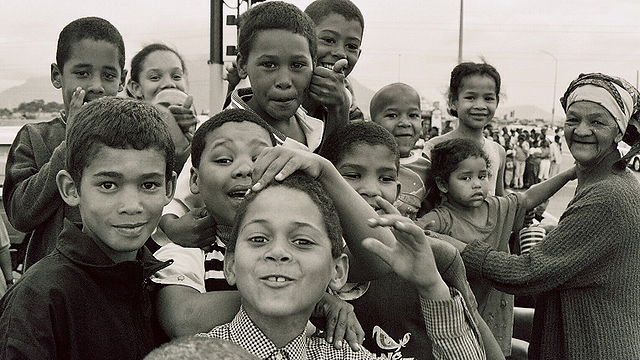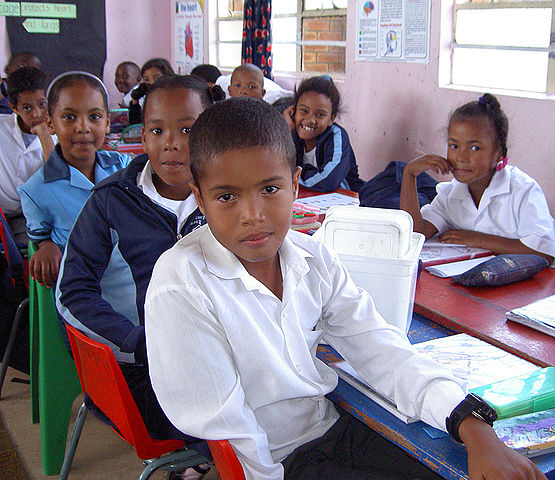South Africa is not a country of black or white. Along the thin lines of the black Xhosas and Zulus and the Whites of Northern European descendants are the Coloured, who are neither black nor white but a mix of everything. Known as the Cape-Coloured or simply The Coloured, they form a significant majority in the Western and Northern Cape of South Africa.
An Interesting Origin
The Khoi San people originally occupied the Cape. They are widely regarded as the first nation of South Africa. They were short and had yellow brown skin. On 6th April 1652, Jan van Riebeeck and a host of other Dutchmen of the Dutch East India Company arrived at the Cape to establish a station to provide refreshment to ships travelling to and from the East. In 1654, the Asians arrived at the Cape and in 1988; The Huguenots joined the growing population from France via Holland. Inter-racial marriages in the region led to a heterogeneous ethnic group with diverse ancestral links. The Coloureds possess a diverse heritage including British, Irish, German, Mauritian, Indians, Zulu and Xhosa.

Cape coloured children in Bonteheuwel township (Cape Town, South Africa)
Many Coloureds are bilingual as they can speak English and Afrikaans and sometimes Kaap. Nonetheless, the prevalent language of Coloureds is Afrikaans. Afrikaans in a language imported by the Dutch who lived in South Africa and who were the first colonialists of the country. it eventually became a well spoken language in Namibia, and to a lesser extent, Botswana and Zimbabwe.
Inter-racial marriages in the region led to a heterogeneous ethnic group with diverse ancestral links
Not Black Enough, Not White Enough
Due to the nature of the backgrounds, Coloured are not classified as blacks and neither do they enjoy the privileges of whites. They are part of a diverse society that includes Black South Africans, White South Africans, Indians and Coloureds. In acknowledgement of the presence of the Coloured ethnic group, Archbishop Desmond Tutu described South Africa as a rainbow nation.
The rights of Coloured people have varied over time. In the 1900s, Coloureds enjoyed similar rights to the whites in the Cape Colony. In the Orange Free State, they had fewer rights. Once they were able to contest for Cape Town’s municipal authority but by 1930, upon the establishment of the Union of South Africa, they were restricted to voting only white representatives. At the full rise of the apartheid programme, Coloured people got stripped of their remaining voting powers. Some Coloureds expressed distrust of the African National Congress (ANC) saying that the Coloured were considered “not white enough under apartheid, and not black enough under the ANC”, thus alienating their political participation.
Coloured people received education inferior to that of White South Africans during the apartheid. It was, however, better than that provided to Black South Africans. Although Coloureds had more privileges than black Africans did, they still faced social discrimination.

Cape coloured school children at Imperial Primary School in Eastridge, Mitchell’s Plain (Cape Town, South Africa).
Battle of Racial Identities
A genetic study led by geneticist researcher of the University of Pennsylvania, Sarah Tishkoff revealed that the Cape-coloured population of South Africa has highest levels of mixed ancestry on the globe, a blend of African, European, East Asian and South Indian. This makes it difficult to associate completely with any tribe.
Coloureds continue to seek inclusion in South Africa. Seen as inbetweeners in a country of black and white, Coloureds feel that they are not fully accepted in the South African community.
Although Coloureds are a minority in South Africa, they have contributed just as much to the progress of the country. Some famous “Coloured people” from South Africa include Abdullah Abdurahman, Trevor Noah, Benni McCarthy, Stephen Pienaar, Adam Small, Trevor Jones, Geraldine Pillay, Herschelle Gibbs, Jonathan Butler, Trevor Manuel, Athol Williams, AKA, Amy Kleinhans and Patricia de Lille.
Coloureds are not only resident in South Africa. A significant population live in Namibia and are also referred to as Coloured. Zambians and Zimbabweans refer to the Coloureds as Goffal. Coloureds are also found in Swaziland.
[Header image]– Trevo Noah – BBC Comedy Greats, Miss South Africa 1992 Amy Kleinhans-Curd – FOTO: Phyllis Green, Athol Williams, Jonathan Butler

